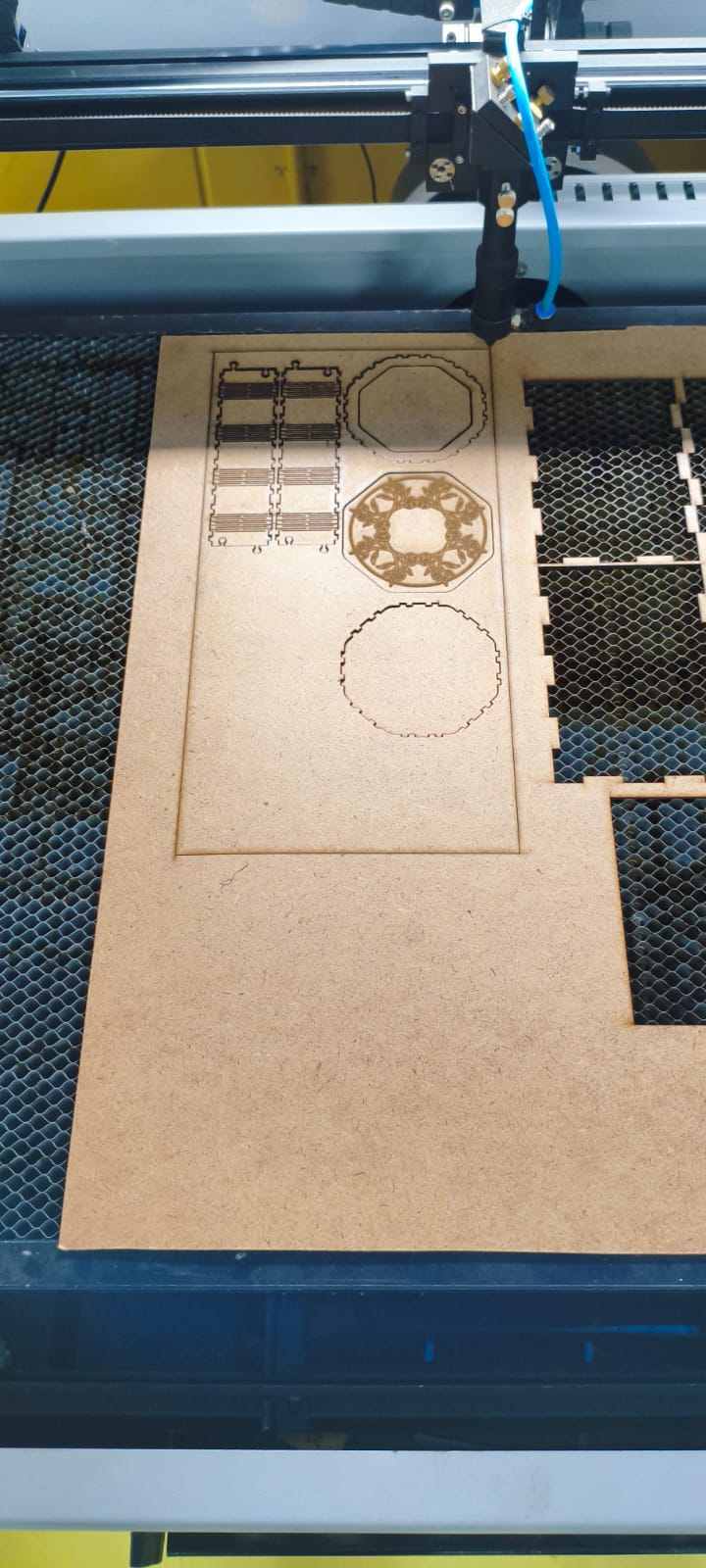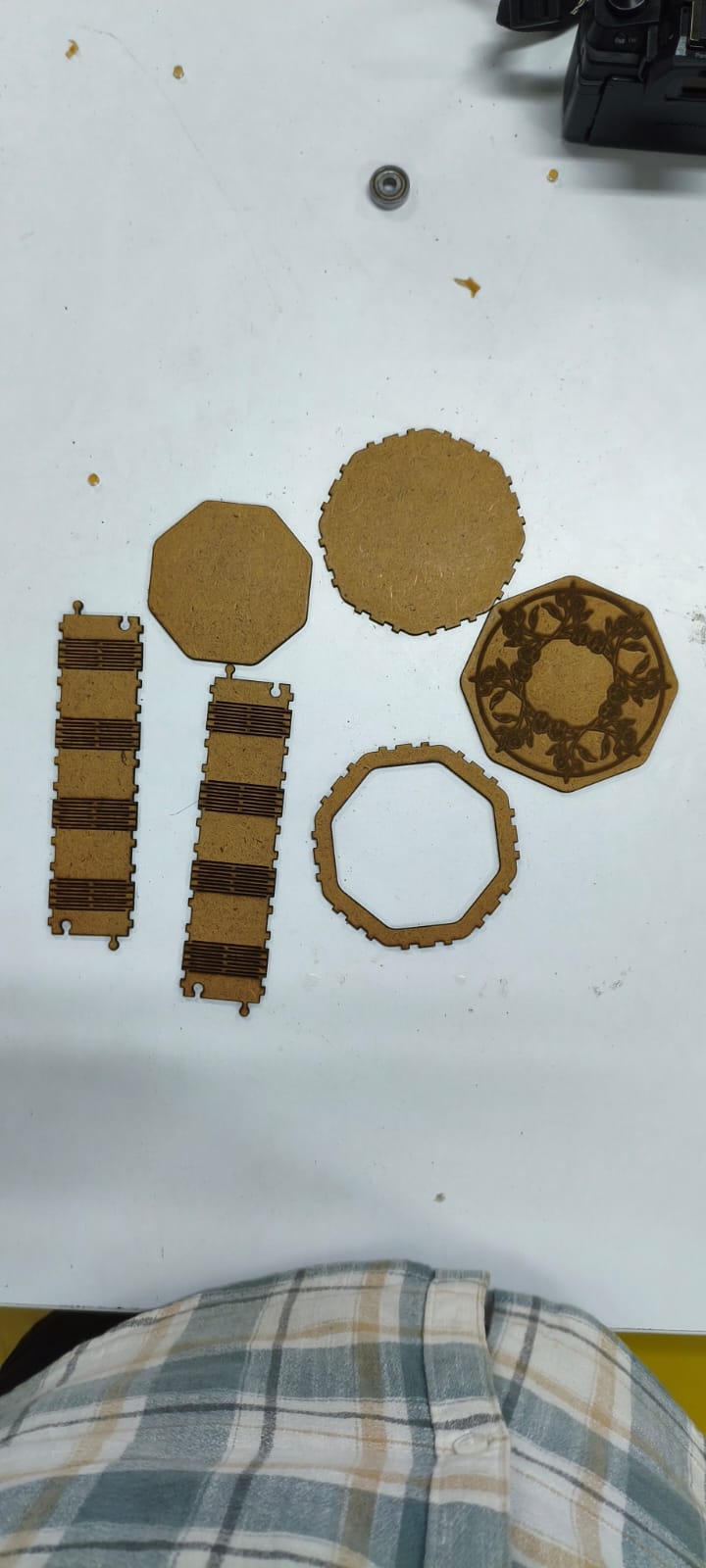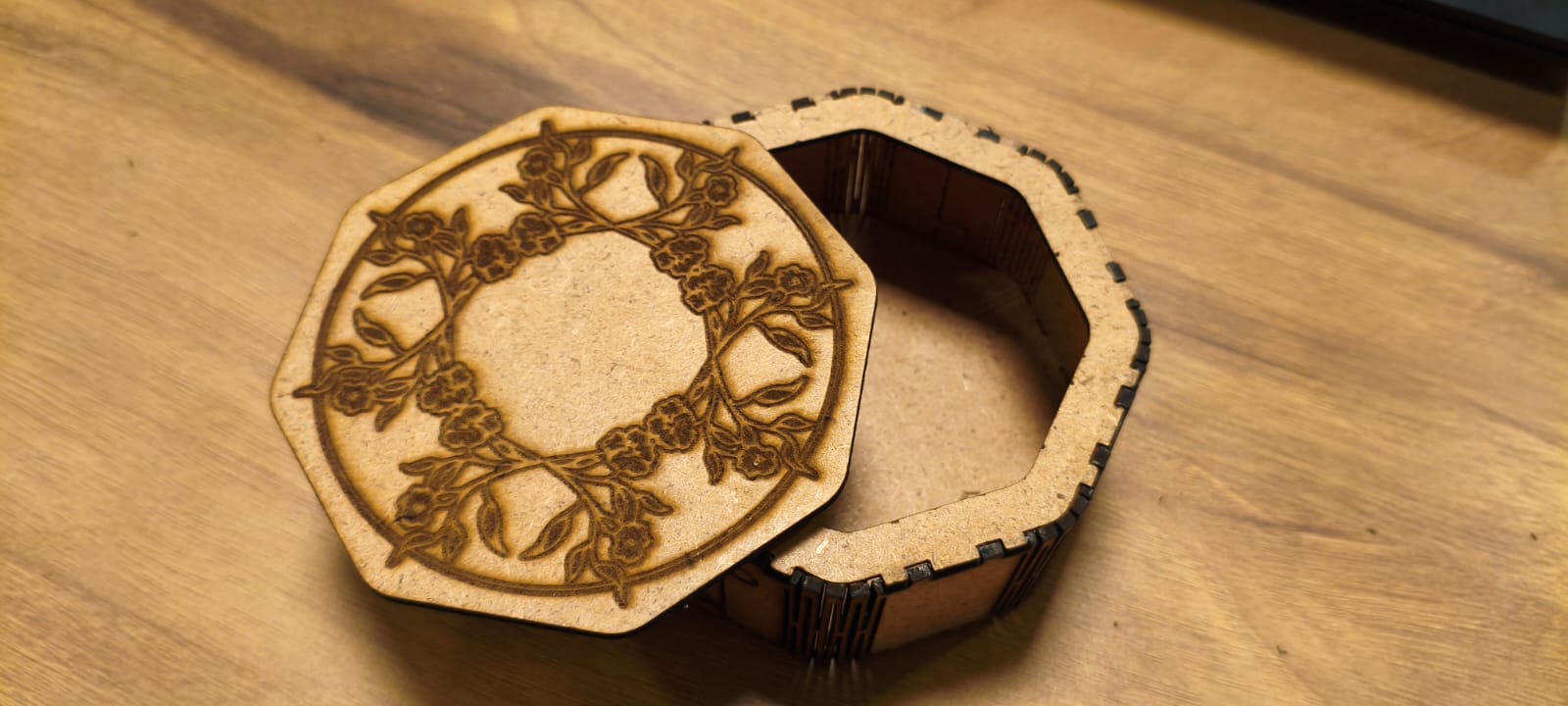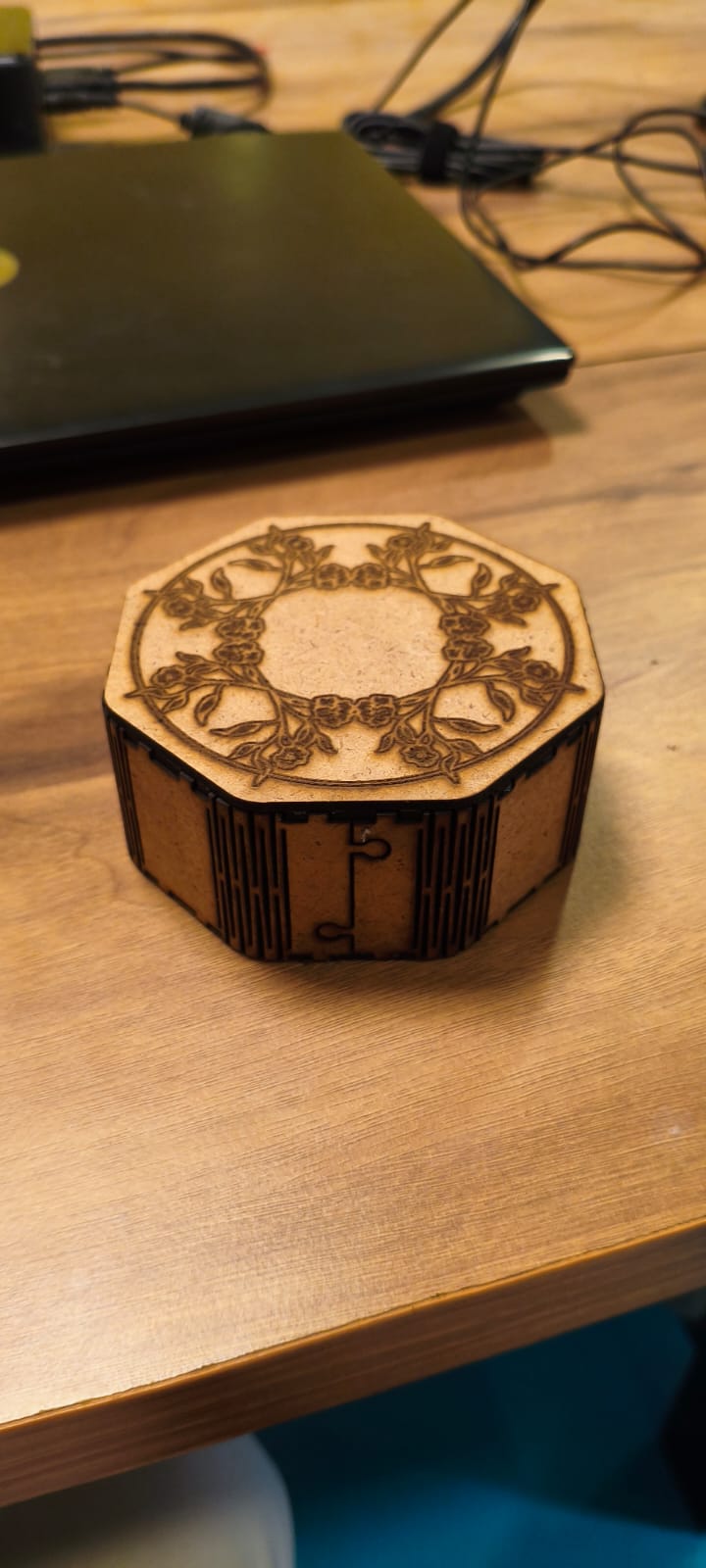Hey there! Welcome to Week 3 of Fab Academy. This week is all about diving into computer-controlled cutting. We�ve got two tasks lined up � one as a group and one on our own � and both are packed with hands-on learning. I�ll be focusing mainly on laser cutting, where I created my own construction kit, and I�ll also walk you through what I�ve learned about parametric design and why it�s such a game-changer when working with laser cutters. Oh, and we�ll touch on vinyl cutting too!
Group assignment laser cutting and scanning:
During this week�s group assignment, our primary focus was on laser cutting and material characterization. Collaborating as a team, we conducted a series of experiments and test runs on the laser cutting machine to better understand its capabilities and limitations. The main objectives of the group task were:
Understanding the Laser Cutting Machine:
A thorough exploration of the laser cutting machine was conducted
to understand its technical specifications, operational capacity, and
underlying principles. This included a deep dive into the types of lasers used,
their power ratings, focal length adjustments, and material compatibility. We
also examined the precision levels, cutting depths, and limitations based on
the machine�s design and capabilities.
Operational Knowledge:
We gained hands-on experience in operating the laser cutter, from initial
setup to executing precise cuts. This involved learning how to load
materials, configure the settings (such as speed, power, and frequency), and
troubleshoot potential issues. Additionally, we studied the importance of laser
alignment and focus adjustments to ensure optimal cutting results
and avoid material wastage.
Safety Precautions:
An integral part of this week�s assignment was understanding and
implementing comprehensive safety protocols for working with the laser
cutting machine. This included wearing appropriate personal protective
equipment (PPE), ensuring proper ventilation, and adhering to strict
operational guidelines to prevent accidents or material fires. Emphasis was
placed on maintaining a secure and hazard-free working environment to ensure
the safety of all participants and equipment.
Optimization Parameters:
We focused on determining the optimal speed and power settings
for various materials (wood, acrylic, metal, etc.) to achieve clean and precise
cuts. Additionally, we explored the Kerf value�the width of the material
removed by the laser�which plays a crucial role in ensuring dimensional
accuracy. By experimenting with different material types and thicknesses, we
calculated the most efficient parameters to minimize errors and material waste.
These values were recorded and serve as references for future projects,
enabling us to adjust CAD models parametrically based on real-world
laser cutting performance.
Material Science and Laser Interaction:
In addition to the technical aspects, we delved into the material
properties and how different surfaces interact with laser cutting
technology. This included studying factors like reflectivity, absorption,
and heat resistance, which influence how effectively the laser cuts
through various materials. Understanding this interaction is critical for
selecting the appropriate materials and settings for specific projects.
Post-Processing Techniques:
We also explored post-processing methods to enhance the appearance and
functionality of laser-cut pieces. This included engraving for
detailing, cleaning the cut edges to remove any burnt residue, and finishing
techniques like polishing or painting for a refined final product.
These optimized values, combined with a better understanding of
material-laser interactions and post-processing techniques, now serve as
essential guidelines for our individual assignments and projects. With the
established optimal settings for speed, power, and Kerf values,
we can confidently modify and adapt parametric CAD models for more
accurate, efficient, and personalized laser-cut designs.
Laser Cutter:
A laser cutter is a highly precise, computer-controlled
tool that uses a focused laser beam to cut, engrave, or etch materials
with exceptional accuracy. The laser beam is directed onto the material�s
surface, where it melts, burns, or vaporizes the material, leaving
behind a clean, sharp cut. Laser cutting technology is versatile and
widely used in industries such as manufacturing, prototyping, crafting,
and product design due to its speed and precision. It is
capable of cutting through a broad spectrum of materials, including wood,
acrylic, plastic, fabric, and metal, with the machine�s cutting
power adjusted based on the material's properties.
Laser cutting is particularly renowned for its ability to produce intricate
designs and complex geometries with minimal material waste. It is
ideal for creating detailed patterns, prototypes, and customized
products. The technology is valued not only for its precision and speed but
also for its ability to handle highly customized and detailed tasks that
traditional cutting methods may struggle with.
At our Trichy FabLab, we have access to a CO2 Laser Cutter,
which is specifically suited for cutting and engraving non-metallic materials
like wood and acrylic. During this week, we conducted a series of trials and
experiments on the CO2 laser cutter to better understand its capabilities,
settings, and material interactions, providing valuable hands-on experience in
laser cutting technology.
CO2 Laser Cutter Machine:
A CO2 laser engraving and cutting machine is a highly
versatile and powerful tool that uses a focused high-powered laser beam
to engrave, cut, and etch a wide range of materials with incredible precision.
The term "CO2" refers to the specific type of laser it utilizes�carbon
dioxide gas�which, when excited, generates a highly concentrated infrared
beam of light. This innovative technology employs a sealed CO2 gas mixture
as its laser medium, producing a focused, intense beam capable of
cutting through materials with exceptional accuracy.
The CO2 laser cutter is particularly effective at slicing through
a variety of materials such as wood, acrylic, leather, and even some metals,
leaving clean, smooth edges and allowing for the creation of intricate,
detailed designs. The machine operates by vaporizing or melting the
material in its path, which makes it ideal for applications ranging from highly
detailed crafting to industrial-scale manufacturing processes. Its
ability to produce sharp, intricate patterns with minimal material waste
has made it indispensable in fields like product design, prototyping,
and customized manufacturing.
With its user-friendly interface and computer-controlled
precision, the CO2 laser cutter offers professionals and hobbyists alike a
reliable and innovative solution for shaping and customizing materials. By
revolutionizing traditional cutting and engraving methods, it opens new
possibilities for creating complex designs and personalized products
in both small-scale and large-scale projects.



